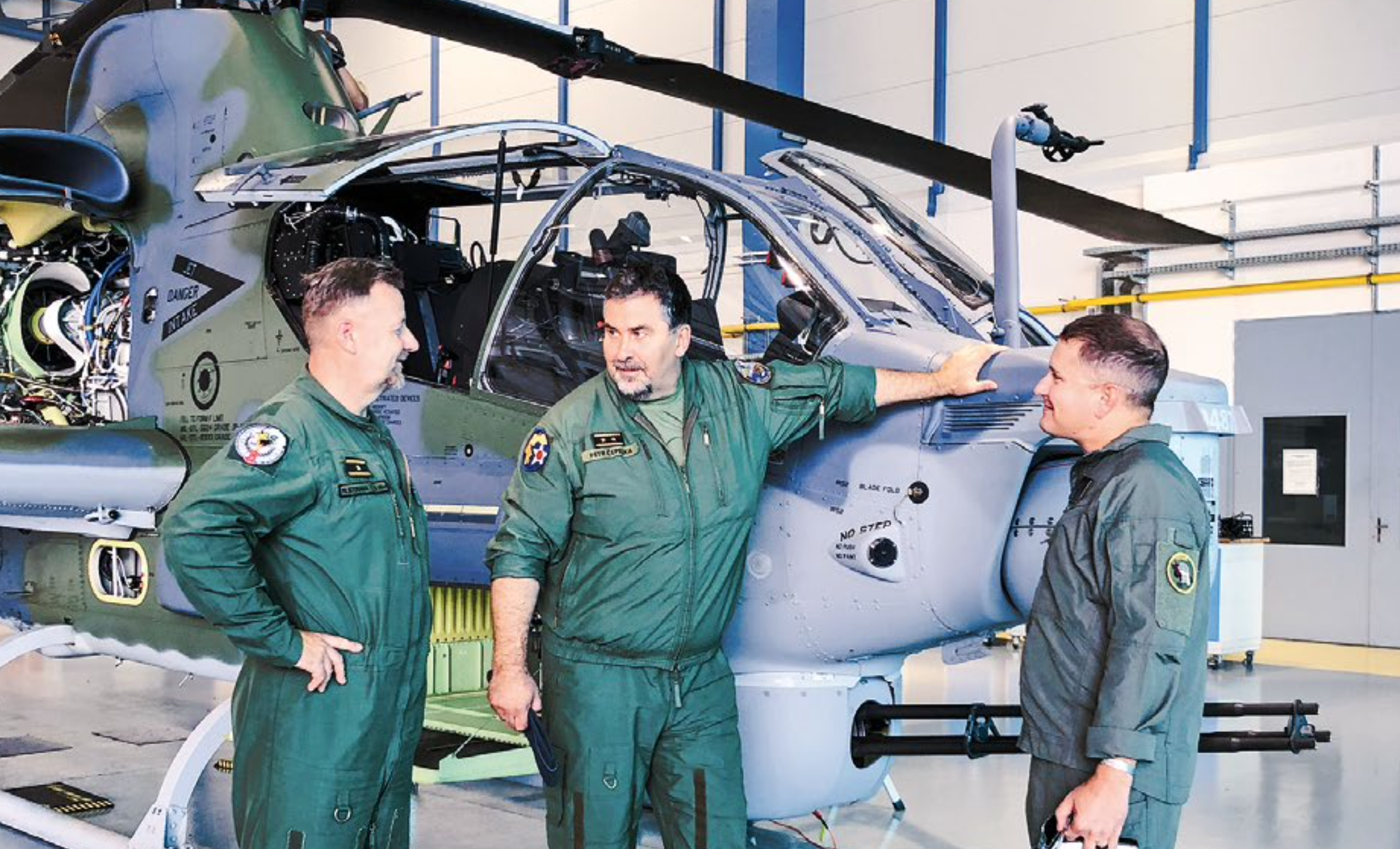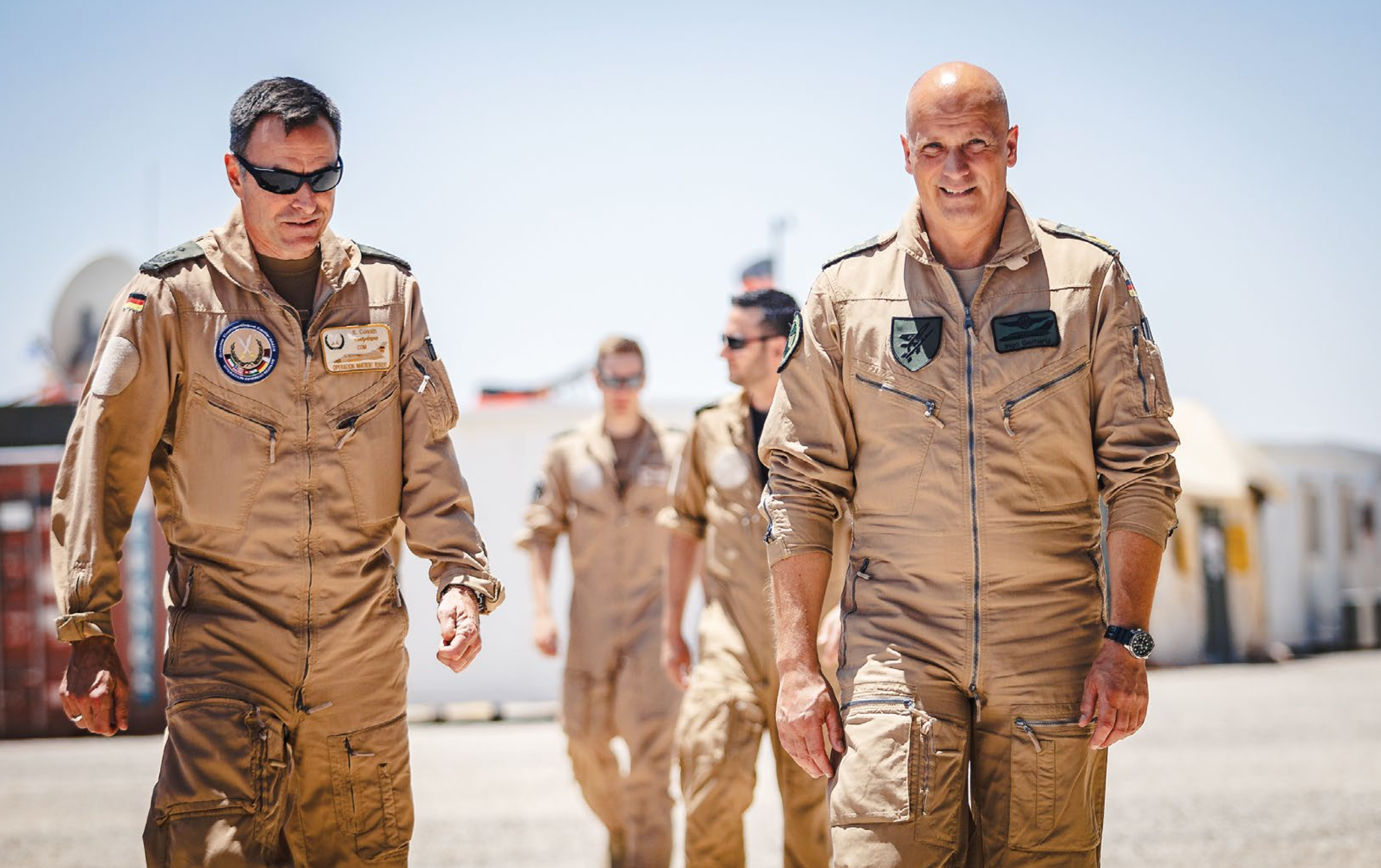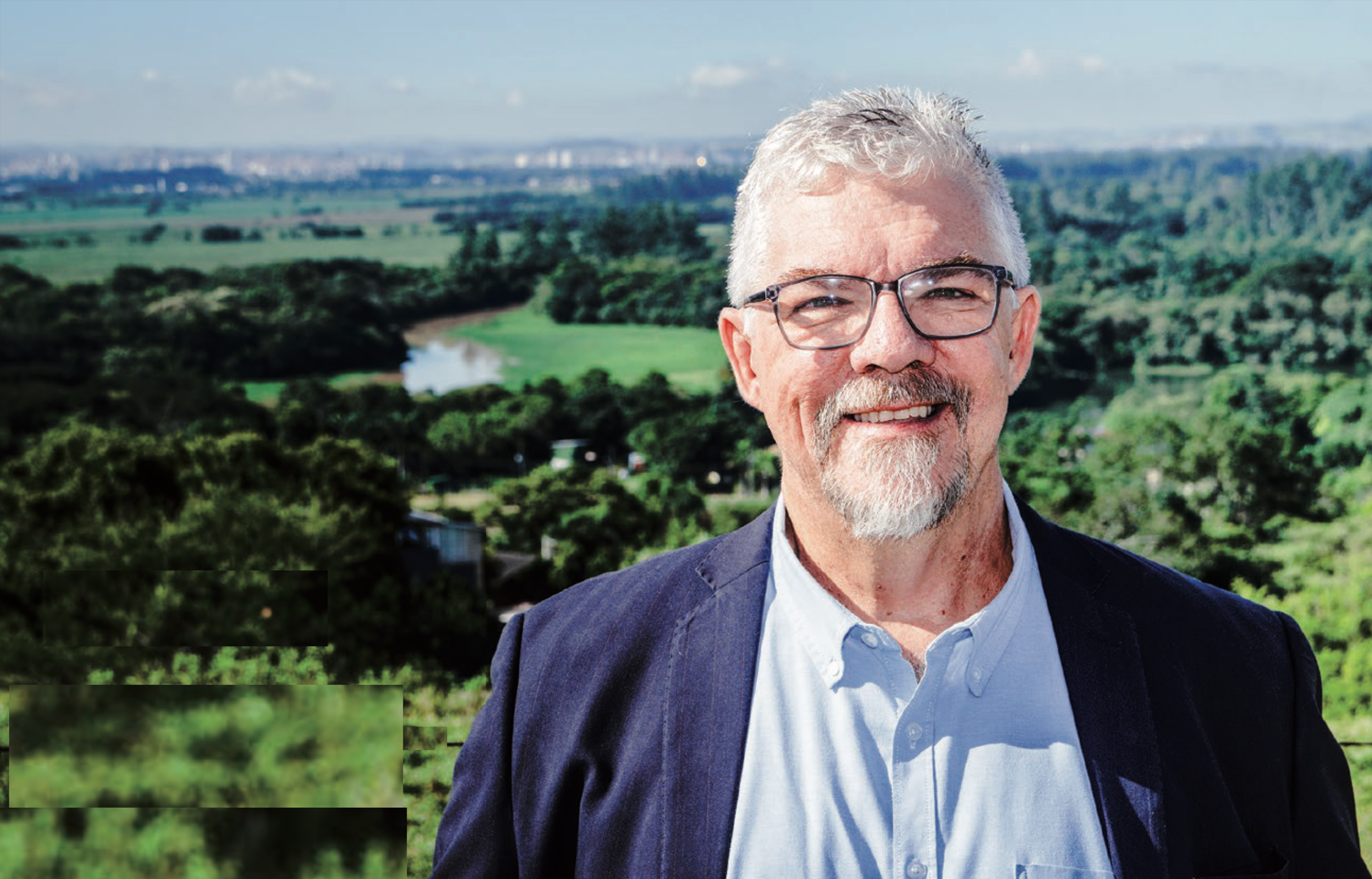Interview with Jiří Verner, former Commander of the Czech Air Force and Deputy Chief of the General Staff of the Czech Armed Forces – Director of the Joint Operations Centre, now Director of Saab for the Czech and Slovak Republics: :
 In 1985, he graduated from the Military Aviation College in Košice (now the Military Aviation Academy of General M.R. Štefánik in Košice). His active service began in 1985 with the 4th Fighter Aviation Regiment in Pardubice of the former Czechoslovak Air Force. In 1994-1999 he held command positions at squadron and corps levels. In 1999 he attended the School of Air and Ground Operations in the Netherlands and two years later the prestigious US Air War College based at Maxwell Air Force Base in Montgomery, Alabama. In 2001, he became the Commander of the 21st Tactical Air Base in Čáslav, a position he held until 2007. In 2005, he retrained from MiG-21 to JAS-39 Gripen fighter aircraft in Sweden. In 2007-2008 he served in the International Headquarters of NATO Headquarters in Brussels and from 1 March 2009 he was Deputy Commander of the Joint Force and Commander of the Air Force of the Czech Republic until May 2013. In 2009, he was inducted as the 394th person into the Alabama Air War College’s Honor Roll. The list recognizes those graduates of the academy who have achieved significant professional success. General Verner symbolically bid farewell to active Gripen flying on his last day as Air Force Commander over Pardubice Airport on 31 May 2013. After that, he served as a military attaché in the United States from 2013 to 2016. Upon his return, he became an advisor to the Chief of General Staff and a year later his deputy. For the last two and a half years he held the position of the Director of the Joint Operations Centre with responsibility for the management of all foreign operations conducted by the Czech Armed Forces outside the territory of the Czech Republic. He retired from active service after 37 years at the end of 2019.
In 1985, he graduated from the Military Aviation College in Košice (now the Military Aviation Academy of General M.R. Štefánik in Košice). His active service began in 1985 with the 4th Fighter Aviation Regiment in Pardubice of the former Czechoslovak Air Force. In 1994-1999 he held command positions at squadron and corps levels. In 1999 he attended the School of Air and Ground Operations in the Netherlands and two years later the prestigious US Air War College based at Maxwell Air Force Base in Montgomery, Alabama. In 2001, he became the Commander of the 21st Tactical Air Base in Čáslav, a position he held until 2007. In 2005, he retrained from MiG-21 to JAS-39 Gripen fighter aircraft in Sweden. In 2007-2008 he served in the International Headquarters of NATO Headquarters in Brussels and from 1 March 2009 he was Deputy Commander of the Joint Force and Commander of the Air Force of the Czech Republic until May 2013. In 2009, he was inducted as the 394th person into the Alabama Air War College’s Honor Roll. The list recognizes those graduates of the academy who have achieved significant professional success. General Verner symbolically bid farewell to active Gripen flying on his last day as Air Force Commander over Pardubice Airport on 31 May 2013. After that, he served as a military attaché in the United States from 2013 to 2016. Upon his return, he became an advisor to the Chief of General Staff and a year later his deputy. For the last two and a half years he held the position of the Director of the Joint Operations Centre with responsibility for the management of all foreign operations conducted by the Czech Armed Forces outside the territory of the Czech Republic. He retired from active service after 37 years at the end of 2019.
Did you always want to be a pilot?
No! It wasn’t this fairy tale. I grew up in Příbor, my father was an aviator in the transport regiment in Mošnov and at that time there was also a fighter regiment equipped with the legendary MiG-21. I was 18 and I was getting to know life. After a year of studying and inspecting the burnt-out lab coat, I came to the realization that I didn’t want to go further down this path and decided on my own to go to Košice to study to be a military pilot. I was fully aware of the limitations that would come with this. No social security and certainly no holidays in Yugoslavia. I got drunk to say goodbye to my friends and took the night train to a new challenge. I left a letter for my parents on the kitchen table. It was purely my decision and I never regretted it later.
Do you miss the cockpit?
No, although… I’ve learned in life that all good things come to an end and I think of it as a closed stage. I first flew in March 1983 in an L-29 and enjoyed it until that imaginary end in 2019. On the other hand, when I get a chance to get behind the controls again, I don’t turn it down and I enjoy it.
Was the transition from pilot to commander difficult?
Well, it depends. I was influenced, probably like everyone of our generation, by the movie Top Gun and Maverick was our idol. Everyone wanted to be like him somehow. He wasn’t the commander type. He just wanted to fly and be the best. And in the air, more than anywhere else, you have to rely on your partner. And that’s when you’re leading a group or being led. There’s a division out there for those who have the ability to lead and are not afraid of responsibility and are able to take reasonable risks. Maverick in Top Gun 2 was already clearly a leader with exceptional abilities. Great movie by the way, the script and the aerial scenes are absolutely perfect. Plus the movie shows that you don’t always need a fifth generation aircraft. You need the aircraft that will accomplish the mission you have in front of you.
You were the commander of the Czech Air Force when the army was transitioning from Soviet MiGs to the current Gripen, how do you recall that time?
I commanded the tactical base in Čáslav for six years. I came at a rather complicated time. There wasn’t much flying going on. The airfield facilities were not worth much and there was no money for fuel. The pilots were often undisciplined and this often can end in a crash or disaster. The fact that we were tasked by NATO to guard the airspace over the Czech Republic gave us a certain priority and soon after I joined, the situation started to improve, we were flying more and at the same time we were rapidly building the base to meet NATO requirements. From 2001 we were introducing the L-159 Alca fighter into the armament and this was a very complex and difficult task at the beginning.
In 2004, the decision was taken to lease the Jas-39 Gripen C/D. Less than a year later, in July 2005, we successfully completed the transition from MiGs to the new Swedish supersonics. The legendary MiGs were replaced by Gripens in the Czech skies and the Fishbeds (Editor’s note: NATO code for MiG-21) were able to leave for the skies. The last flight with MiG on the way to Přerov to the base is an experience and a memory for life. One great chapter of the Air Force has finally closed, but we have opened a new, better one.
It was a very hectic time, a lot of pressure, but we made it through with honour and I am very proud of all those who participated in the introduction of Gripen aircraft. I’m not just talking about the pilots, but also the technicians and the ground support staff and, in fact, everyone on the entire base who took it upon themselves to do with their hard work, enthusiasm and skill what at the beginning seemed quite impossible. To prepare within 12 months for the operation of a modern supersonic and not allow our airspace to be unprotected. I still have fond memories and a good feeling about the work we did.
It’s not for nothing in the Air Force that commanding a regiment, a base, is the best job in the world. I’ll sign that without hesitation. There’s nothing like it after that.
What is the role of the Czech Air Force within the alliance?
The Gripen aircraft fulfills exactly and without fail what is required of us, both from NATO and from the Czech Army, or rather from the Ministry of Defence. That is, the continuous protection of the airspace of our own country, the ability to attack air and ground targets and, in the future, to possibly engage in international operations, which is, of course, very complicated and is due to the number of aircraft, armament and so on. At the moment, the protection of the airspace of the eastern wing of the Alliance is being added to this. This is the protection of the Baltic States, which is well known to the public, and we have twice provided protection for Iceland.
In 2027, when the current lease of 14 JAS-39 Gripen C/Ds ends, these aircraft will still have 50% of their service life ahead of them. So the question is to what extent do we need to quickly dispose of machines that are now nearing half their useful life.
Has the war in Ukraine changed this role?
It hasn’t. But what has changed is the view of the public, the professional public and, not least, the interest of politicians in general in the defence of the homeland or the state, if you like. Within the Alliance, we are fulfilling the tasks we have set ourselves, and these will not change for the Air Force with the intended development over the next decade. If we are talking about increasing the number from 14 to 24 aircraft, we are only going back to the standard numbers planned at the beginning of the millennium. Back then, due to the floods in 2002 (Editor’s note: The 2002 flood was the Czech Republic was one of the largest events of its kind and one of the worst natural disasters in modern Czech history, and involved significant investment in rescue, recovery and prevention.) and subsequent budget cuts, the number of aircraft was reduced to the current 14. A larger number of aircraft will allow us to train aircrew well, but only if the number of support staff is adequately increased. 24 aircraft alone will not save or impact anything. Personnel is absolutely crucial. And Gripen needs significantly less of them for its operation than American machines. In the case of the transition to the latest Gripen E, it will take weeks to retrain them. In the case of the F-35, we are talking about complete training for recruits, which we don’t even have at the moment.
In an emergency, a Gripen can take off from an ordinary road and continue to perform its missions even if its home base is disabled – completely unthinkable in the case of the F-35.
Did this war change the needs of the Czech Air Force in any way?
The Czech Air Force has been going in the right direction for a long time. The main task of the Czech Air Force within the NATO alliance is and will be the protection of airspace. It is a readiness concept, which must ensure that aircraft are in the air at any time within 15 minutes of being commanded. This is often downplayed to the issue of escorting aircraft that cannot be contacted or aircraft in emergency. But it is also the protection of sensitive infrastructure, such as nuclear power stations, in the event of a threat. The needs are therefore essentially identical, but I think that the situation that we got into with the Gripen lease should be rectified, namely that the original intention of 24 aircraft has left the fleet reduced to 14 aircraft. I therefore very much welcome the effort to fix this deficiency, which has so far been saved by the heartfelt commitment of the people who are around our air force. Especially out west, they are always amazed at what we can do with 14 aircraft.
This is also due to the high level of combat readiness of the Gripen. It is normally over 80%, which means that you have 9 or 10 aircraft at your disposal almost all the time. Compared to the competition, where you have this readiness sometimes well below 50%, so simply, even from a larger fleet of aircraft, most of them will be constantly on maintenance stand-down.
The biggest failure is when you are not able to secure the defence of your own airspace due to delayed deliveries, as has unfortunately happened to Slovakia or Bulgaria. NATO simply has this as a basis, and it is a big problem if a state is unable to ensure this elementary security. It is not as easy as just lending the Slovaks a few planes and nothing happens. It is a big problem and for me as a former air force commander it would be a huge professional tragedy. I am frankly afraid that this could happen here as well.
With Gripen E aircraft, to which the Czech Air Force could very smoothly transition around 2035-2040, the Czech Republic would be assured of always up-to-date and relevant air defence. Gripen E will form the backbone of the Swedish Air Force until 2070+.
Read more about Gripen in the Czech Airforce:










